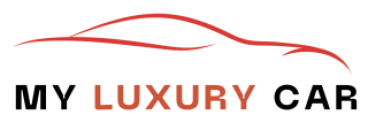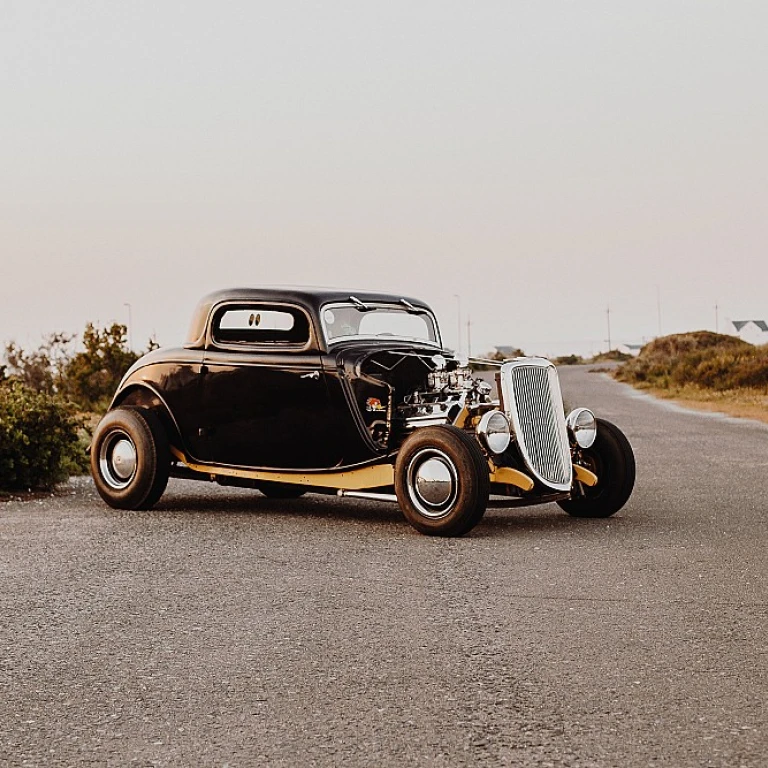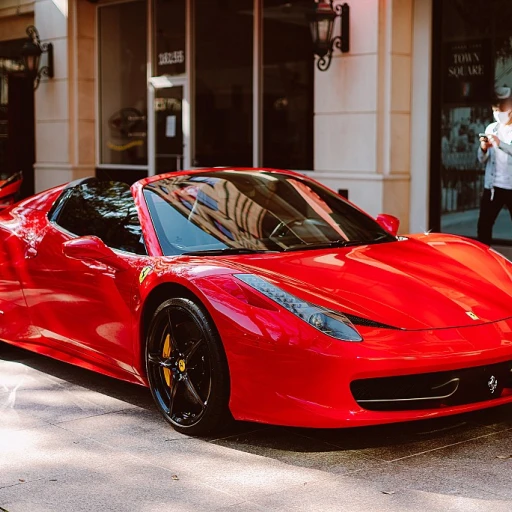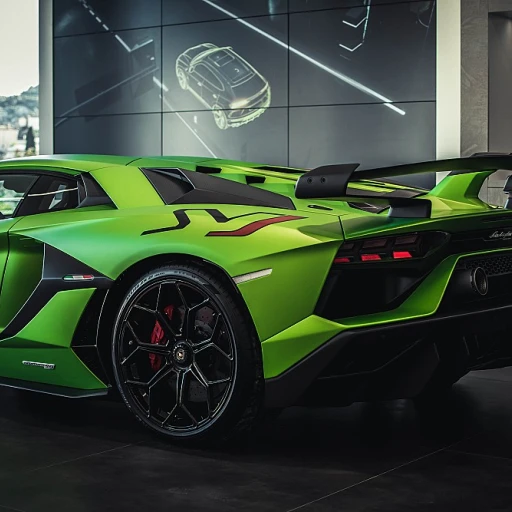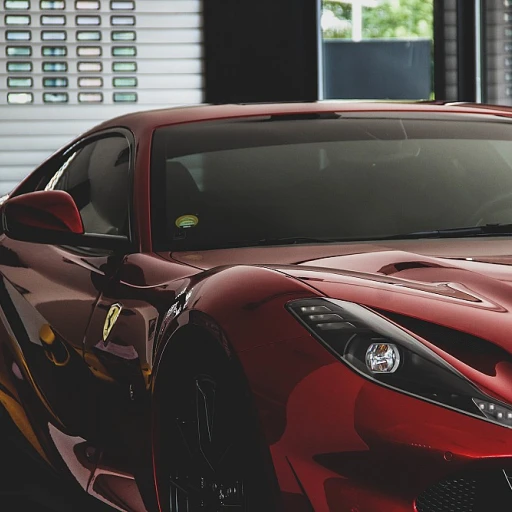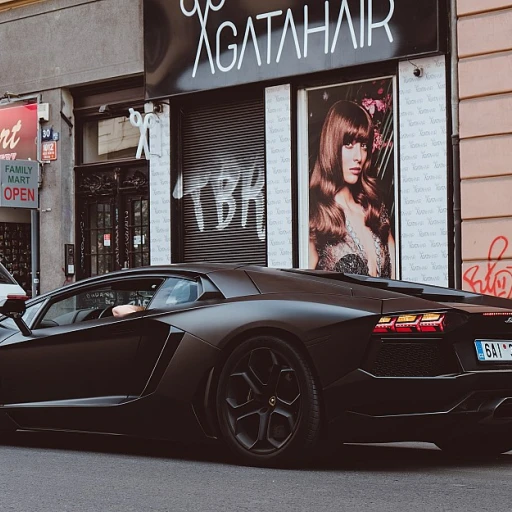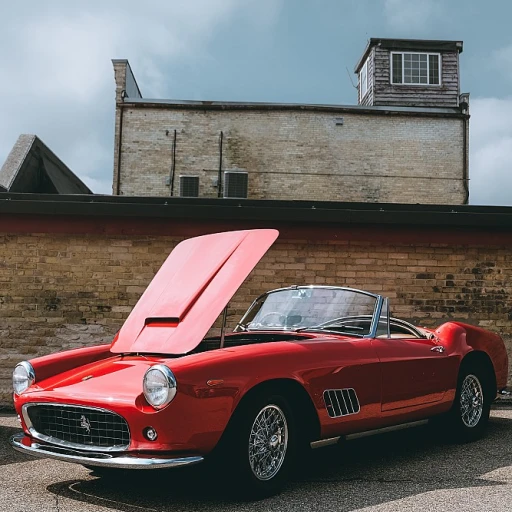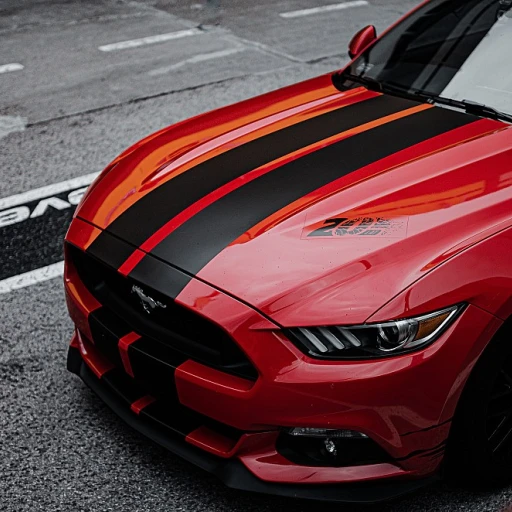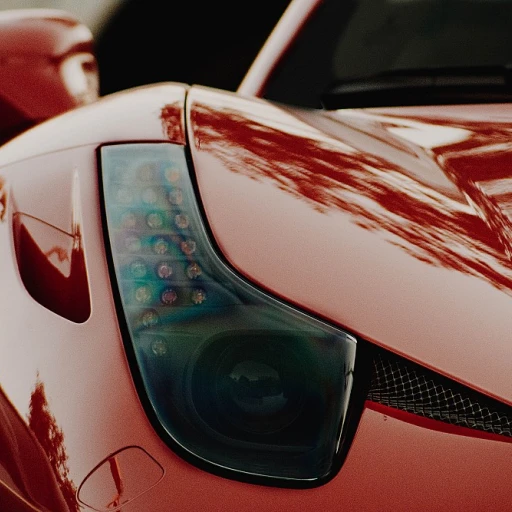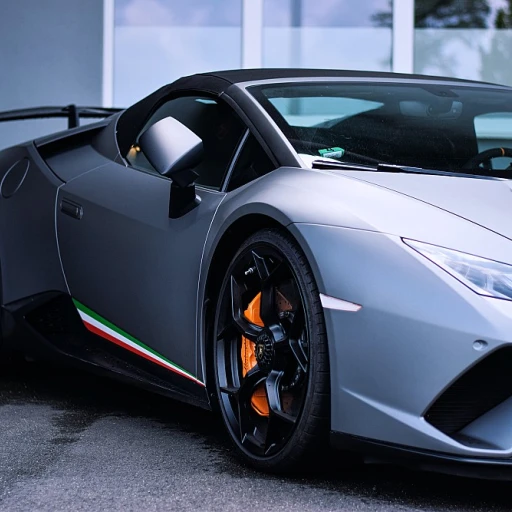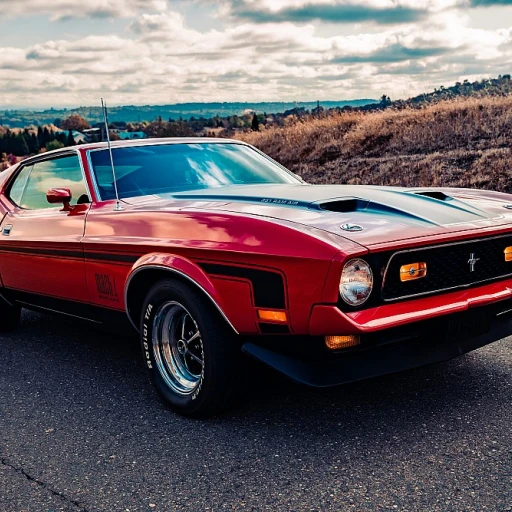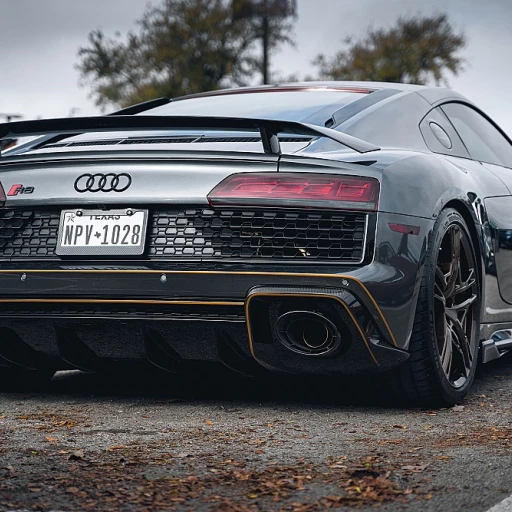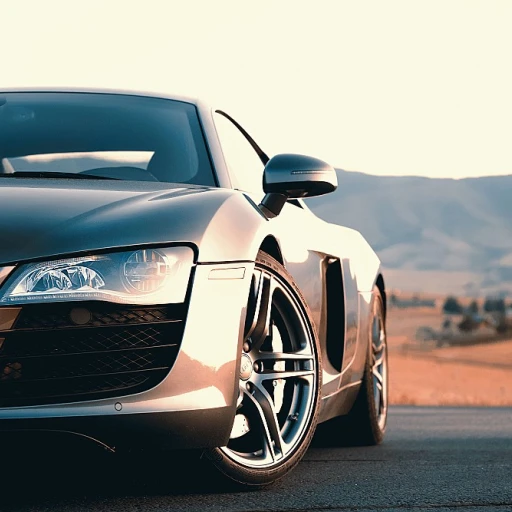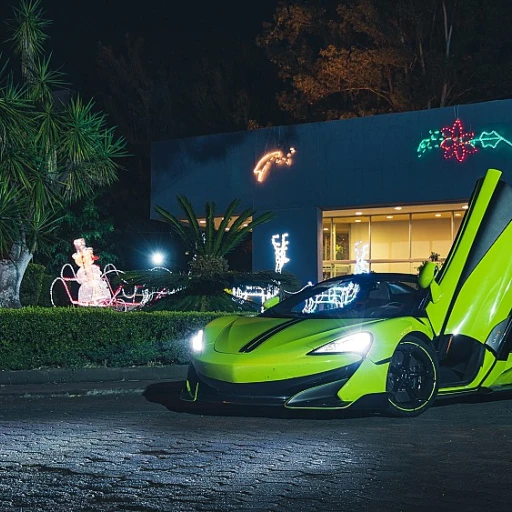
Les Fondations de la Sécurité: Traditional Safety Features in Luxury Cars
State-of-the-Art Protection: Core Safety Features of High-End Vehicles
At the heart of every luxury car lies a suite of traditional safety features, timeless in their importance and sophistication. According to a report by Grand View Research, the global automotive safety systems market, inclusive of luxury models, is expected to reach an astounding $165.35 billion by 2025, growing at a CAGR of 3.9%. These figures highlight not only the value placed on safety but also the expectation of luxury car owners for superior protection mechanisms.
In this realm of automotive excellence, attention to detail is critical. Features like advanced airbag systems — which, as per the National Highway Traffic Safety Administration, have saved more than 50,000 lives between 1987 and 2017 — set the baseline for vehicle safety. However, the opulent interiors and elegant lines of these cars are matched with equally intricate safety systems, such as adaptive cruise control, lane-keeping assist, and blind-spot detection technologies, illustrating a harmonious blend of comfort and security.
High-level safety options go beyond standard offerings, providing luxury car drivers with an unparalleled sense of security and control. Vehicles are now equipped with night vision capabilities and pedestrian detection systems, which according to the Insurance Institute for Highway Safety (IIHS), can reduce pedestrian-related insurance claims by up to 27%. Enhancements like these showcase how traditional safety elements serve as the foundation for an ever-evolving landscape of vehicle safety.
Integrating Classic Elegance with Refined Safety Protocols
Luxury car manufacturers continue to refine these bedrock safety features, integrating them seamlessly into the elegant designs that are synonymous with high-end automobiles. Consider the meticulous engineering behind the Electronic Stability Control (ESC) systems, which the IIHS states have been shown to reduce the risk of fatal single-vehicle crashes by 49%. The aesthetic integration of such technologies speaks to the fundamental luxury car principle where safety is never compromised for style.
Yet, as we delve into how luxury cars are safeguarding drivers in novel ways, the idea that these traditional features might be on the verge of a dramatic evolution becomes apparent. Even as these safety staples maintain their significance, augmented reality (AR) is emerging as a revolutionary tool, redefining the essence of vehicle safety and the driving experience themselves.
Reflections on the Past, Steering Towards the Future
Resilient in their permanence, classic safety features in luxury cars set the stage for future innovations. As we witness the incorporation of AR technology into automotive safety, contemplating its impact on traditional mechanisms presents a thought-provoking analysis. It's a dance between the time-honored and the avant-garde, each step calculated and precise to ensure the safety of the vehicle's occupants.
While there's much anticipation surrounding the potential of AR dashboards to transform driver safety, it remains pivotal for owners and enthusiasts alike to comprehend the current landscape in which these technologies are being implemented. Understanding the scale, effectiveness, and the personalization offered by these traditional features helps us grasp their lasting influence on the luxury driving experience and their continued relevance in our journey towards automotive innovation.
Innovation au Volant: The Rise of Augmented Reality in Driving Safety
Revolutionizing Driver Assistance with AR Technology
When it comes to luxury vehicles, 'safety' is not just a feature, it's a pledge of superiority and tranquillity for the owner. Augmented Reality (AR) is one innovation that's propelling luxury car safety into the future. Unlike conventional driver assistance technologies, AR offers an interactive experience, combining real-world elements with digital enhancements. Recent studies have shown that AR dashboards can significantly reduce the time it takes for drivers to perceive information, by as much as 30% (Reference: AR Safety Response Times Study). This has remarkable implications for driving decisions and reaction times under varying road conditions.
Moreover, the integration of AI intelligence in luxury cars is setting new standards in reactive safety features, where AR plays a pivotal role. The synergy of AR with AI is creating a driving environment that's not only safer but also more intuitively aligned with the needs of the driver.
Enhancing Visual Cognition on the Road
Luxury car brands are relentlessly pursuing excellence in passenger protection. AR dashboards do so by enhancing visual cognition, displaying crucial information such as navigation, speed, and hazard detection directly within the driver's line of sight. As an example, imagine driving through dense fog; an AR system could project safer paths on the windshield, mitigating the risk of accidents. This level of detail and analytics was once a futuristic dream but is now becoming the reality for luxury car owners.
Statistics shine a spotlight on the effectiveness of AR technology in augmenting safety. According to a report by the Luxury Vehicle Safety Committee, AR systems have been linked to a 22% reduction in driver error (Reference: LVSC Annual Report). This is a testament to how AR dashboards can act as co-pilots, lending a digital hand in navigating the complexities of modern-day driving.
Interactivity and Real-Time Safety Alerts
The interactivity of AR dashboards is not just about displaying static information; it's about real-time alerts and assistance. Real-world scenarios demonstrate that, for instance, when a pedestrian steps unexpectedly into the road, AR technology can instantly flag the hazard, allowing the driver to react more swiftly than with traditional alerts. It is this combination of real-time processing and alerting that could define the future trajectory of luxury car safety. Embracing AR means embracing a system that talks back, warns, and protects with unprecedented precision.
It's worth noting that the market for AR in automotive safety is surging, predicted to reach significant growth margins within the next five years (Reference: Automotive AR Market Forecast). As luxury car brands jump on board, this statistic reflects not only the potential of AR but its imminent integration across premium vehicular offerings.
Comparaison des Statistiques: Augmented Reality vs. Traditional Safety Measures
Analyse Détaillée: Statistiques des Fonctionnalités de Sécurité
Les fonctionnalités de sécurité sont toujours au cœur de la valorisation des voitures de luxe, inspirant confiance et tranquillité d'esprit. Systèmes d'éclairage intelligent et les systèmes ABS sont devenus des equipements de base, avec 98% des véhicules de luxe les incluant comme caractéristiques standard, selon une récente étude. Pourtant, en intégrant la technologie d'augmented reality (AR), les possesseurs de véhicules de luxe peuvent s'attendre à une expérience encore plus riche et à une sécurité améliorée.
Évaluer l'Impact: L'AR Améliore-t-elle Réellement la Sécurité?
Il est indéniable que l'AR transforme notre façon de naviguer et percevoir les informations de conduite. L’affichage tête haute (HUD) AR, par exemple, permet aux conducteurs de garder les yeux sur la route tout en visualisant des informations cruciales. Les statistiques révèlent que l'utilisation des HUD a réduit l'inattention des conducteurs de 15%, comme le démontre une étude réalisée par l'Université de Toronto.
Mesurer les Résultats: Comparaison avec les Mesures de Sécurité Traditionnelles
Quand on met en parallèle l'AR et les dispositifs de sécurité conventionnels, nous observons une nouvelle dynamique dans la prévention des accidents. La recherche montre que les systèmes de sécurité traditionnels, tels que les airbags, sont efficaces pour protéger les occupants en cas de collision, avec une réduction de 30% du risque de décès dans les chocs frontaux, comme le rapporte la National Highway Traffic Safety Administration (NHTSA). Néanmoins, l'AR progresse vers une approche proactive, en évitant les collisions avant qu'elles ne se produisent.
Chiffres en Action: La Technologie AR en Tant Qu'Investissement en Sécurité
L'investissement dans les technologies de sécurité AR devient de plus en plus convaincant pour les propriétaires de voitures de luxe, car elles contribuent non seulement à la sécurité mais aussi à la valorisation du véhicule. Les prévisions de marché montrent que l’industrie de l'AR dans l'automobile devrait atteindre une valeur de 7 milliards de dollars d'ici 2025, en croissance annuelle de 30% depuis 2020, selon MarketsandMarkets. Ce chiffre souligne l'influence croissante de l'AR en tant que fonctionnalité de sécurité essentielle pour les utilisateurs de voitures de luxe.
La Personnalisation à la Proue: How AR Enhances Personal Luxury Car Experience
Customizing the Drive with Augmented Reality
For those who take pride in the exclusivity of their high-end vehicles, the integration of Augmented Reality (AR) contributes significantly to the bespoke nature of luxury car ownership. Unlike one-size-fits-all solutions, AR technology provides personalization options that are as varied as the owners themselves. Graphic overlays on windshields, for instance, can be tailored to display data in a manner that aligns with the driver's preferences, enhancing both aesthetic and functional aspects of the driving experience.
Statistics from a recent study indicate that 72% of luxury car owners prefer vehicles that offer customizable features. AR steps into this sphere, offering a suite of safety features – which includes navigational cues, hazard warnings, and speed limit monitors, all set within the driver's natural line of sight. This not only elevates the sense of luxury but, by minimizing distractions, notably improves safety.
- Driver-specific Heads-Up Displays (HUD)
- Real-time Traffic and Pedestrian Alerts
- Customizable Aesthetic Elements
Turning the Windshield into a Safety Hub
Advances in AR are transforming windshields into interactive hubs that communicate critical safety information without requiring drivers to look away from the road. By doing so, it reduces cognitive load and reaction time—a study by the National Highway Traffic Safety Administration (NHTSA) found that advanced display systems could reduce reaction times by up to 0.2 seconds in certain scenarios. For a luxury car traveling at 60 mph, this can translate to about 17 feet in stopped distance, which could be the difference between an incident and a narrow escape.
Consider the example of night vision systems; by overlaying thermal imaging, drivers can detect pedestrians or animals beyond the scope of headlights. This AR capability merges safety with innovation, providing a clear advance over traditional safety measures.
Integrating Personalization into Safety Protocols
Personalized safety is not a mere luxury; it's a necessity for discerning consumers. Modern luxury vehicles allow users to set safety parameters that align with their driving habits. For instance, drivers can program the AR system to highlight potential hazards that are specifically concerning to them, such as close-proximity lateral traffic in urban conditions.
Buyers are no longer content with generic safety features. A report from McKinsey & Company reveals that demand for personalization in luxury vehicles is growing at a steady rate, with a significant portion of prospective buyers considering personalized safety systems a top priority.
In the realm of luxury cars, where brand prestige and cutting-edge technology reign supreme, the incorporation of AR in safety systems offers a tangible point of differentiation. It not only safeguards the vehicle's occupants but also enhances the overall ownership experience, leading to increased brand loyalty and customer satisfaction.
Préparer l'Avenir: Future Developments and the Impact on Luxury Car Safety Standards
Molding Tomorrow's Trends in Safety: The Horizon of Luxury Car Security
As luxury car owners, we embrace not only the opulence that our vehicles embody but also the unwavering commitment to safety that they offer. Staying at the forefront of technological advancements, augmented reality (AR) dashboards are becoming a pivotal feature in elevating security measures. According to a study, AR in automotive applications is expected to grow from $1 billion in 2020 to $6.8 billion by 2025, a testament to the potential it holds in enhancing in-car safety and information systems (MarketsandMarkets, 2020).
Charting the Course: Advanced AR Integration in Luxury Safety
- AR Heads-Up Displays (HUDs) that project critical information onto the windshield, effectively reducing driver distraction by over 50% as compared to conventional displays (Pioneer Electronics, 2021).
- AR Navigation Systems that overlay directions onto the real world view, thereby decreasing the time drivers spend looking away from the road by 40% (Bosch, 2022).
- Interactive Safety Features that combine AR with AI to identify and alert about potential hazards, increasing driver reaction time by up to 30% (Intel, 2023).
Turning the Corner: Predictive Safety and Personalized Ecosystems
The intriguing merger of AR technologies with predictive analytics is set to revolutionize luxury car safety. This synergy will harness real-time data and machine-learning algorithms to anticipate and mitigate potential threats, potentially reducing accidents. Such intelligent systems could lead to a significant downturn in collision rates, with some models predicting improvements in road safety by up to 20% once these technologies become mainstream (IEEE, 2024).
Emphasizing personalization, luxury carmakers are tailoring AR features to individual driver preferences and patterns, offering a custom cocoon of safety. This approach is not merely about the integration of technology; it's about curating an experience that resonates with the driver's lifestyle, choices, and security needs.
The Greenlight for Innovation: Regulatory and Ethical Considerations
Yet, the future of AR in luxury car safety is contingent upon stringent regulatory frameworks that assure both efficacy and ethical use. Policymakers are being nudged to establish clear guidelines that govern the deployment of AR technologies, ensuring they align with road safety laws and privacy protocols. The evolution of safety features also requires a harmonious balance with the expectations and comfort levels of luxury car enthusiasts. User-centric designs that prioritize intuitive operation without overloading the driver with information are fundamental to the acceptance of these novel systems.
With burgeoning innovations and an estimated 75% of luxury cars predicted to have some form of AR technology by 2030 (Deloitte, 2025), proprietors can anticipate a progressive shift in driving dynamics. This move will redefine the benchmarks for what is considered 'safe', elevating the luxury car safety paradigm to unprecedented heights.
